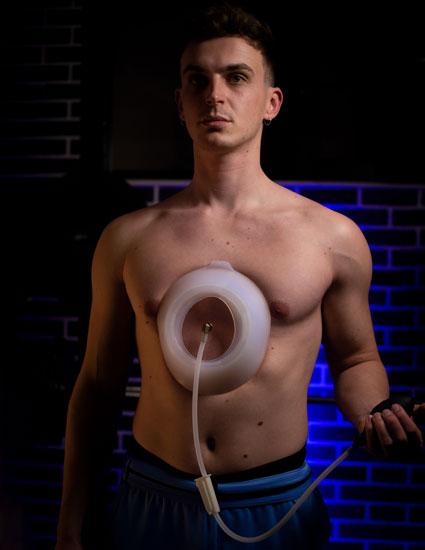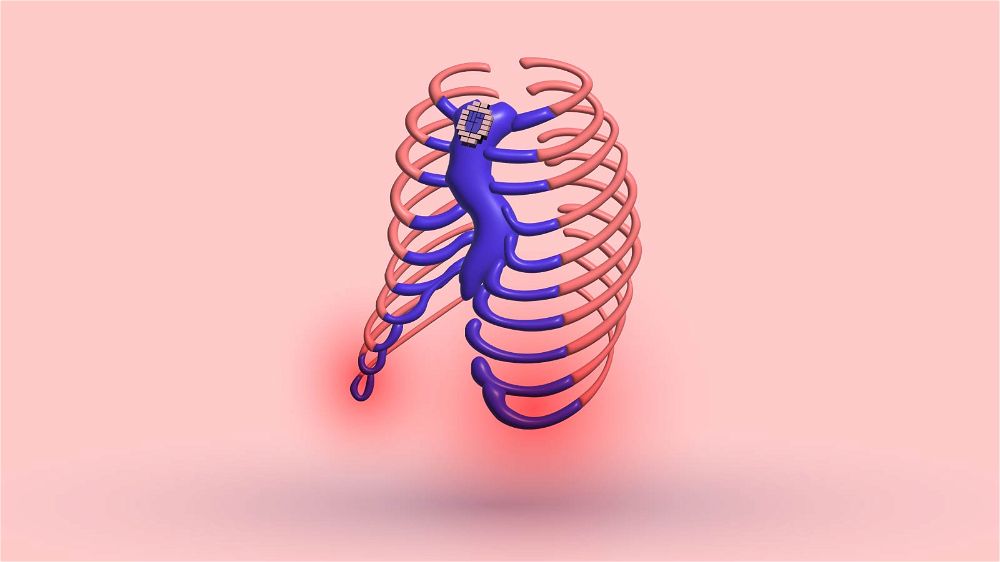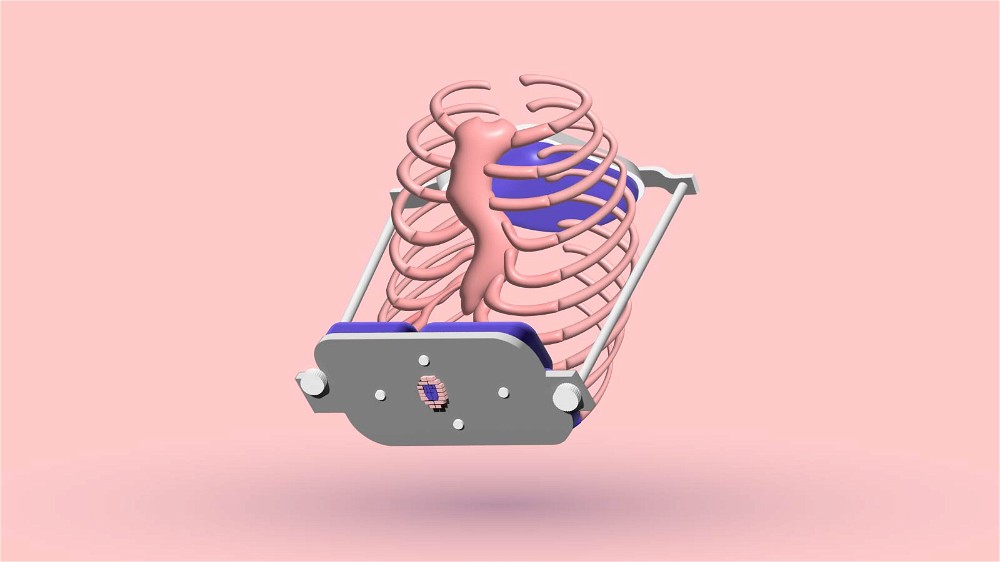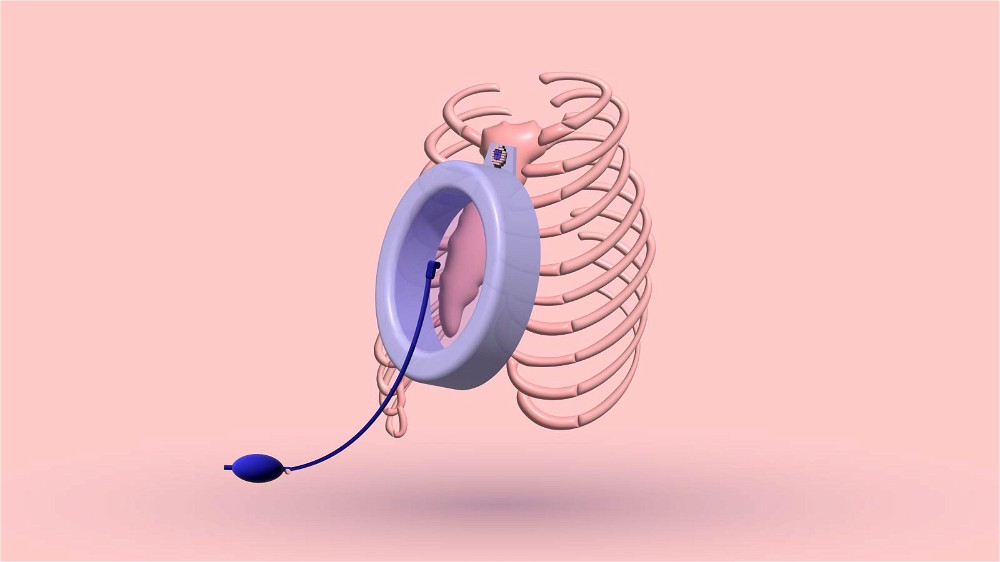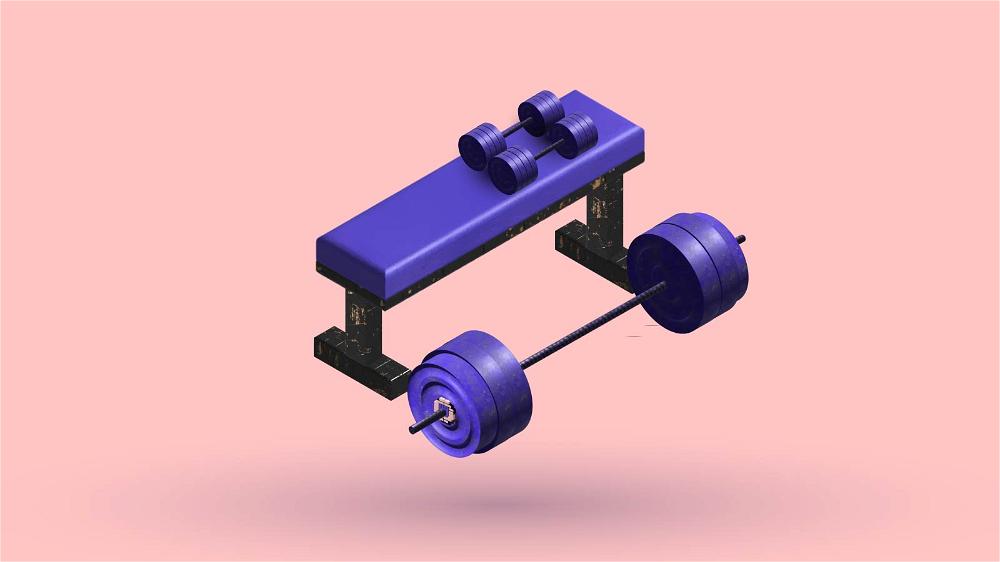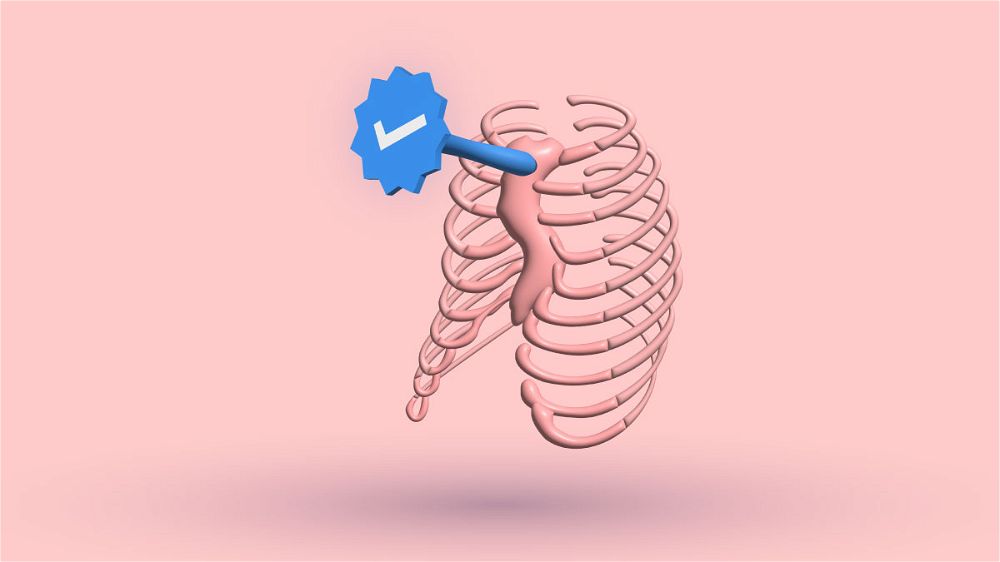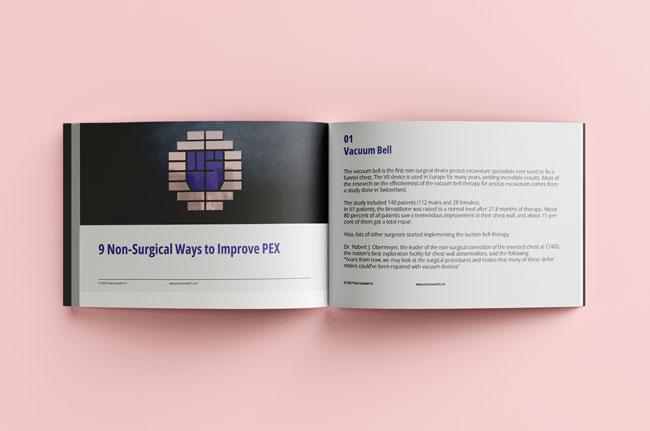The first time I realized I had shortness of breath was when I was hiking on the trails of Markovi Kuli in my hometown of Prilep. I later realized my lack of endurance was primarily caused by pectus excavatum.
Most of my friends had no problem climbing the steep trails, even though we were all in similar shape. I always dreaded long-distance running and endurance sports like swimming.
I played basketball, and my sunken chest didn’t affect my breathing, mainly because it is a short-interval intense sport, where you sprint for a few seconds, then rest, and repeat.
I always had trouble going uphill. My heart was constantly racing, and I dreaded every single second imaginable.
10 proven Benefits of Hiking

Even though I wouldn’t say I liked hiking at first, I later felt the many benefits it offers for people with pectus excavatum. I decided to search whether the benefits are scientifically proven or just a placebo.
The discovery was terrific, and I will share the top ten scientifically-proven benefits of hiking for everybody, especially people with sunken chests.
1. It makes you a Happier Person
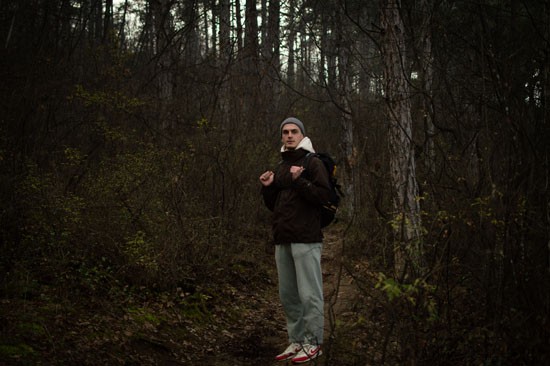
The most significant benefit I get from regular hiking is making me happier. I find peace in every hike I do, usually in the morning.
It helps me maintain and strengthen my mental health, which is as important as taking care of my physique and improving my pectus excavatum.
The psychological aspect of pectus excavatum is often neglected. It affects most people with deformities, especially those who think their chest is more sunken.
Dr. Mark Cucuzella created a voluntary collaboration in West Virginia to encourage outdoor physical activities such as hiking for a regional middle school.
The creative part is that the students learn about health, fitness, nature, and local history while hiking in the local parks during school hours. The study resulted in two hundred students’ increased happiness, concentration, and willingness to continue hiking outside school hours.
2. Improves creativity
A 2012 study published by psychologists from the University of Utah and the University of Kansas showed a 50% improvement in creativity in just four days for people who went hiking and interacted with nature, free of electronic devices.
David Strayer, the co-founder of the study, said that you could reverse the adverse effects of a sedentary lifestyle by taking a nature hike.
Experts always say that having a positive relationship and being in nature more often is very healthy for your mental and physical well-being. Scientists didn’t confirm those claims scientifically until these recent studies were done.
3. Hiking and Stress
Most people with pectus excavatum experience image dissatisfaction and lowered self-confidence. Body image can affect mental well-being negatively. A study has stated that negative attitudes and feelings toward body image can influence suicidal ideation more than depression and hopelessness.
A study by J Strum, published in 2012, has documented the emotional benefits of mountain hiking and spending time in nature, such as reducing distress, depression, and suicidal intentions.
4. Minimizes Risk of Heart Disease
According to Mayo Clinic, severe pectus excavatum can hinder the function of the heart and lungs. If the indentation is severe, it can cause heart compression or displacement over one side, reducing its ability to pump blood more effectively.
This can cause exercise intolerance, shortness of breath, increased heart rate, and pain. If your doctor diagnoses you with heart and lung hindering, get your doctor’s approval before hiking.
If you’re cleared for hiking, take advantage of it, as it is fantastic for your heart health.
Like walking, hiking is an excellent cardiovascular activity, mainly if it includes mountain trails. This will make your heart work harder, lowering the risk of heart disease.
5. Improve Bone Density
A 1994 study discovered whether walking, independent of other physical activities, helped increase bone density and bone loss from the entire body. The study concluded that women who walk more than 7.5 miles a week had more bone density throughout their bodies than females walking less than 1 mile a week.
It proved that if you walk for at least a mile each day, you will have higher bone density throughout the body. Walking is highly beneficial in slowing the rate of bone loss.
It has been reported that people with osteogenesis imperfecta (a genetic condition that stops the body from developing solid bones) can have pectus excavatum or carinatum deformities.
The severe cases, patients with osteogenesis imperfecta and sunken chests have a Nuss procedure because the risk of bone fracture increases.
Because of that, they are given bisphosphonate therapy to increase bone mineral density. After that, they can undergo surgery two or three years after improved bone density.
Even if you don’t have osteogenesis imperfecta but suffer from pectus excavatum, it is always a good idea to keep your bone density high. You will have better success improving your condition without surgery, using a vacuum bell, rib flare compression braces, exercising, etc.
That is why walking and, even better, hiking can help you increase bone density, making it easier to correct your deformity.
6. Increase in Vitamin D
There is a growing trend to avoid direct sunlight to prevent skin cancer. People are recommended to use a fake spray tanning agent to get a healthy-looking glow. Even though you may get the needed tan, you will avoid the sun and not get its free benefits.
Sun exposure is essential if you’re trying to improve pectus excavatum by building more muscle, recovering better via better sleep, and helping you deal with anxiety.
Problem with Spray Tanning
However, the bigger problem is that spray tanning can stop your skin’s ability to produce Vitamin D. Scientists discovered that spray tanning agents containing DHA could cause this problem.
According to the University of Missouri, signs of lacking vitamin D rickets include soft bones, pectus excavatum, and pectus carinatum.
Vitamin D is also famous as the sunshine vitamin. According to a study published in 2012, about 50% of people around the globe have insufficient levels of vitamin D. This is caused by a lack of outdoor activities such as hiking lowering direct sunlight exposure.
Vitamin D and Muscle Building
Studies have shown that vitamin D is linked with increased muscular strength, especially in those who lack vitamin D.
Also, vitamin D directly affects sleep regulation and can help you sleep better at night, helping you recover faster from your workouts when you’re trying to build muscle to make your pectus excavatum deformity less noticeable.
7. Can Strengthen Friendships
Getting together with your friends on a hike is fantastic. You will get to see all these significant parts of nature together. Hiking together will help you spend more time together and strengthen your bond.
You can look at it also as an investment in your friendship. Iron will sharpen iron. Spending a fantastic time in the fresh air, laughing and joking together, and even motivating each other on the things you struggle with is priceless.
This will help you minimize stress and make you less anxious. The sun rays will help you increase your vitamin D levels, which will significantly improve the mood of all of you.
8. Relieves Anxiety
A study published in December 2018 wanted to discover the mental benefits of short 15-minute walks in forest regions. The study found that walking in these areas decreases depression, anxiety, hatred, exhaustion, confusion, and improves mood.
This had a more considerable positive effect on individuals with higher anxiety levels. As I mentioned, people with pectus excavatum deformity suffer from high stress, mainly due to their physical appearance dissatisfaction.
Because of this, taking a short walk in the nearby forest will help you tremendously. I practice this daily because I live close to the Vodno Mountain in Skopje, North Macedonia. I take brief, short walks in the forest, where I take off my shirt on a sunny place in the woods and meditate or read.
This morning ritual doesn’t take me more than an hour. I go home more energized and in a far better mood, feeling the natural endorphins released from my body. That is why I recommend hiking in foresty areas to every person suffering from an inverted chest.
9. Powerful Cardiovascular Fitness
According to WebMD, hiking is a very effective cardiovascular workout. Even a small hill for pectus excavatum sufferers will raise the heart rate and burn excess calories.
On the days you’re busy and can’t get to the trail, you can load up your backpack and do short, intense power walking. Even though you might think this won’t do anything, it will take your breath out, and you will feel the burn in your calves.
Hiking Only Once a Week Results
A 2015 study wanted to discover the outcome of single weekly mountain hiking on the cardiovascular system in older adults. The study lasted nine months, and the participants were required to have only one hiking session during the weekend, lasting for about three hours, with 500 meters altitude increase.
The research discovered no improvement in cardiovascular risk in the older people that participated in the study. Only older people with hypertension benefited from this. This shows that hiking only once a week isn’t enough to improve cardiovascular risks in people above 60.
If you want to increase your cardiovascular fitness, I recommend taking more frequent but shorter weekly hiking sessions. Go for a hike at least two times a week to see improvement in your cardiovascular system.
10. Improves sleep
Hiking will make you sleepy earlier, achieve a deep sleep state throughout the night, and make you feel more energized and refreshed in the morning.
A 2011 Japanese study wanted to discover the effects of forest walking on people with sleeping problems. The study revealed that forest walking improved sleep, mainly due to physical activity and mental improvements such as reducing stress and anxiety.
This will also help you build more muscle to make the chest deformity less noticeable because better sleep quality is connected with increased muscle strength, while less sleep reduces power.
Conclusion
Even though hiking will not directly build muscle to make pectus excavatum less obvious, it will help mostly deal with the negative mental consequences of the deformity.
However, hiking is still a strenuous physical activity that involves the whole body. You will build amazing legs if you add hiking to your exercise arsenal.
Indirectly, hiking and power walking uphill will help you lower stress and depression and make you sleep better, translating to more muscle throughout the body.
I recommend this fantastic activity to everybody that suffers from concave chest deformity.
If you have any questions, feel free to leave them in the comments below. Thank you for reading!
18 Sources
- (PDF) Psychological Distress in Patients with Pectus Excavatum as an Indication
for Therapy [Internet]. [cited 2022 Dec 4]. Available from: https://www.researchgate.net/publication/265821613_Psychological_Distress_in_Patients_with_Pectus_Excavatum_as_an_Indication_for_Therapy - Dr. Mark Cucuzzella on MAF HR Training, Running Form and Injury Prevention
[Internet]. 2019 [cited 2022 Dec 4]. Available from:
https://www.youtube.com/watch?v=ROJXu3VvyhI - Mitten D, Overholt JR, Haynes FI, D’Amore CC, Ady JC. Hiking. Am J Lifestyle Med.
2016 Jul 9;12(4):302–10. - Nature nurtures creativity after four days of hiking [Internet]. ScienceDaily.
[cited 2022 Dec 4]. Available from: https://www.sciencedaily.com/releases/2012/12/121212204826.htm - Pectus excavatum and pectus carinatum patients suffer from lower quality of
life and impaired body image: a control group comparison of psychological
characteristics prior to surgical correction | European Journal of Cardio-Thoracic Surgery | Oxford Academic [Internet]. [cited 2022 Dec 4]. Available from:
https://academic.oup.com/ejcts/article/40/5/1138/446807 - Sturm J, Plöderl M, Fartacek C, Kralovec K, Neunhäuserer D, Niederseer D, et al.
Physical exercise through mountain hiking in high-risk suicide patients. A randomized crossover trial. Acta Psychiatr Scand. 2012 Dec;126(6):467–75. - Corliss J. Health benefits of hiking: Raise your heart rate and your mood [Internet]. Harvard Health. 2016 [cited 2022 Dec 4]. Available from:
https://www.health.harvard.edu/blog/health-benefits-of-hiking-raise-yourheart-rate-and-your-mood-2016092810414 - Krall EA, Dawson-Hughes B. Walking is related to bone density and rates of
bone loss. Am J Med. 1994 Jan;96(1):20–6. - Osteogenesis Imperfecta | Johns Hopkins Medicine [Internet]. [cited 2022 Dec
4]. Available from: https://www.hopkinsmedicine.org/health/conditions-and-diseases/osteogenesis-imperfecta
632 - Cruz Centeno N, Ortiz Justiniano VN. Pectus excavatum in osteogenesis imperfecta type I treated with Nuss procedure after pamidronate therapy. Journal
of Pediatric Surgery Case Reports. 2021 Aug 1;71:101915. - Using fake tan is bad for your health - this is why [Internet]. [cited 2022 Dec
4]. Available from: https://uk.style.yahoo.com/using-fake-tan-bad-health165032349.html?guccounter=1&guce_referrer=aHR0cHM6Ly93d3cuZ29vZ2xlLmNvbS8&guce_referrer_sig=AQAAALYN7tskDK5D_GFsOsW2PNHm9VBNQsRQg_UingcYczOisMYfb6Wp_iVhhGytcK49dYG8A1hxZO1p_Dun_LYhSUEyHkqbhBGa1Shayxu2va
W26tTduohXFDGBj5dVZ52ykK_Er7mz9CCFr3OoVLVcON4TwolXTdXaNGni7B_yEn
cM - Vitamin D: The “sunshine” vitamin - PMC [Internet]. [cited 2022 Dec 4]. Available from: https://www.ncbi.nlm.nih.gov/pmc/articles/PMC3356951/
- MCastroMe. Effects of Vitamin D on Skeletal Muscle and Athletic Performance [Internet]. 2018 [cited 2022 Dec 4]. Available from:
https://sogacot.org/effects-of-vitamin-d-on-skeletal-muscle-and-athletic-performance/ - Song C, Ikei H, Park BJ, Lee J, Kagawa T, Miyazaki Y. Psychological Benefits of
Walking through Forest Areas. Int J Environ Res Public Health. 2018 Dec
10;15(12):2804. - Exercise, Workout, and Fitness Center: Yoga, Cardio, Strength Training, and
More [Internet]. [cited 2022 Dec 4]. Available from: https://www.webmd.com/fitness-exercise/default.htm - Gatterer H, Raab C, Pramsohler S, Faulhaber M, Burtscher M, Netzer N. Effect
of weekly hiking on cardiovascular risk factors in the elderly. Z Gerontol Geriatr.
2015 Feb;48(2):150–3. - Morita E, Imai M, Okawa M, Miyaura T, Miyazaki S. A before and after comparison of the effects of forest walking on the sleep of a community-based sample of people with sleep complaints. Biopsychosoc Med. 2011 Oct 14;5:13.
- Chen Y, Cui Y, Chen S, Wu Z. Relationship between sleep and muscle strength
among Chinese university students: a cross-sectional study. J Musculoskelet
Neuronal Interact. 2017 Dec;17(4):327–33.





